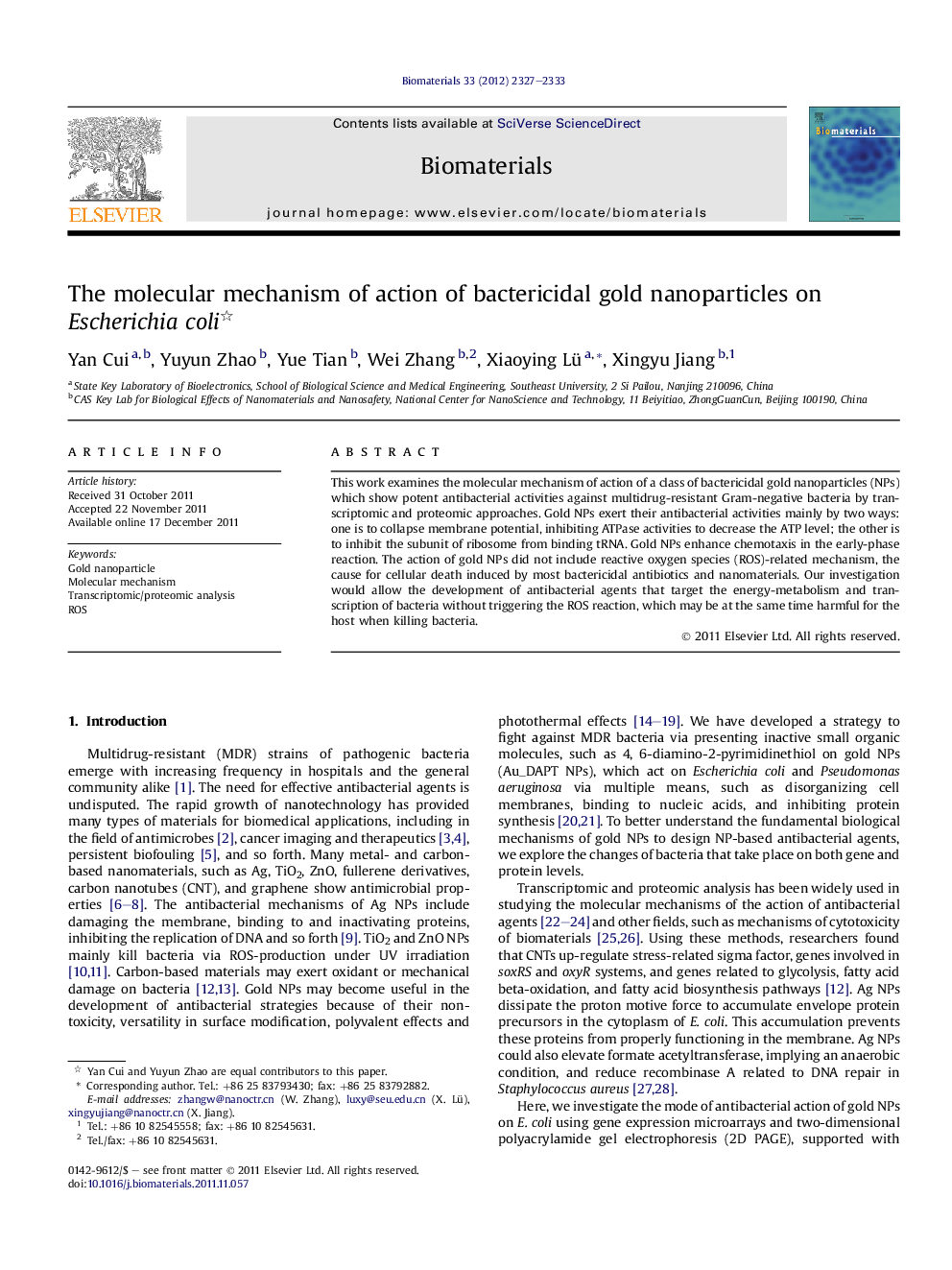| Article ID | Journal | Published Year | Pages | File Type |
|---|---|---|---|---|
| 7473 | Biomaterials | 2012 | 7 Pages |
This work examines the molecular mechanism of action of a class of bactericidal gold nanoparticles (NPs) which show potent antibacterial activities against multidrug-resistant Gram-negative bacteria by transcriptomic and proteomic approaches. Gold NPs exert their antibacterial activities mainly by two ways: one is to collapse membrane potential, inhibiting ATPase activities to decrease the ATP level; the other is to inhibit the subunit of ribosome from binding tRNA. Gold NPs enhance chemotaxis in the early-phase reaction. The action of gold NPs did not include reactive oxygen species (ROS)-related mechanism, the cause for cellular death induced by most bactericidal antibiotics and nanomaterials. Our investigation would allow the development of antibacterial agents that target the energy-metabolism and transcription of bacteria without triggering the ROS reaction, which may be at the same time harmful for the host when killing bacteria.
